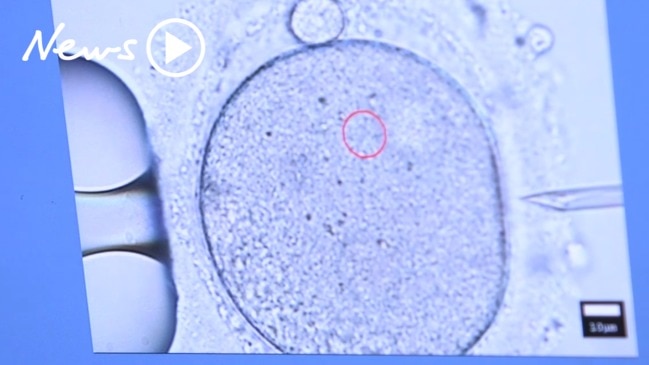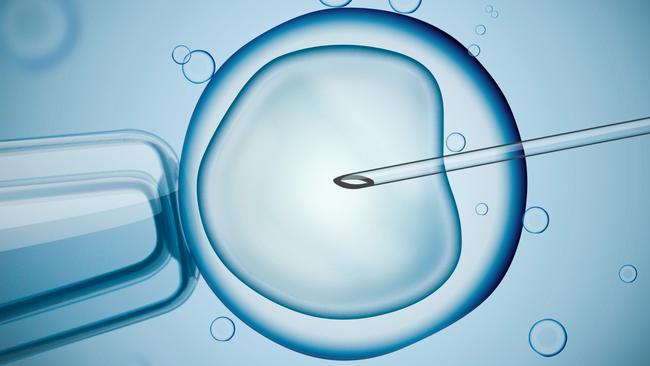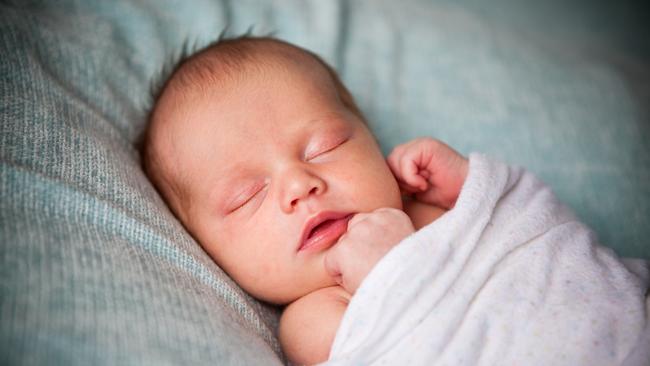Victorians who donated sperm for ‘research’ discover they have multiple children
MEN who donated sperm “for research” as students in the 1970s and ‘80s are discovering they are parents of multiple children.

VIC News
Don't miss out on the headlines from VIC News. Followed categories will be added to My News.
MEN who made sperm donations believing it was for research and would remain anonymous will be able to contact and be contacted by people created from their genetic material.
Research by the Victorian Assisted Reproductive Treatment Authority has found that contrary to assumptions, meticulous sperm donor records were kept by the Queen Victoria, Prince Henry’s and Royal Women’s Hospitals prior to fertility industry regulation in 1988.
RELATED: VICTORIAN SPERM AND EGG DONORS TO LOSE ANONYMITY
DONOR SPERM KIDS JUST AS HEALTHY AS NATURALLY CONCEIVED CHILDREN
A VARTA report to be released on Wednesday will reveal one donor from the early days of the state’s fertility treatment program who was told his six months worth of sperm donations were for research, but discovered nearly 30 years later that he had eight offspring.
A man who donated at Prince Henry’s in 1986 has discovered five children were created and a man who donated there in 1987 discovered he had eight recorded offspring.
Though secrecy around donor-identity was paramount in the late 1970s and early 1980s, donors to the Royal Women’s Hospital may also have had their sperm used to create an upper limit of 20 offspring until the late 1970s. From the early ‘80s the hospital imposed an upper limit of 10 recipients per donor.
When donors reached their limit some sperm was sent to South Australia and Queensland.
Historic Queen Victorian Hospital records which had been believed lost were rediscovered by the report’s researchers, including a “pregnancy book”.

This data is enabling a fresh round of donor-conceived people who thought they would never find their biological parent to connect.
Louise Johnson, CEO of VARTA, is urging parents who have never revealed their adult children’s donor status to tell them.
“We think there is still a large majority of people conceived (by donor sperm) prior to the introduction of the legislation in 1988 that still don’t know they were donor conceived,” said Ms Johnson.
“We are very much encouraging parents to tell their adult children how the family was formed. We know that adults would much rather find out via their parents.”
She said the ancestry-research trend meant “there are many people going onto ancestry and DNA-testing sites and finding out that they’re donor conceived”.
Following legislation in 2017 all donor conceived Victorian adults can get identifying information about their donor without the donor’s consent.
Donors can register their preferred contact method, including “no contact”.

The ‘History of Donor Conception Records in Victoria’ report, to be launched by Professor Louis Waller on Wednesday night, says donors were recruited from universities, hospital staff and at one point VFL clubs were approached asked to encourage players to donate.
Most donors told the researchers Associate Professor Fiona Kelly from LaTrobe University and Associate Professor Deborah Dempsey from Swinburne University of Technology that they did so for “altruistic” reasons, but the small payment was also mentioned.
One former medical student who donated at the then Prince Henry’s hospital described it as a “great way to get a little bit of beer money”.
Some donors told researchers they had entered the program with a degree of “naivety” and since they were as young as 18, they did not consider “the gravity of what they were doing”.
Some said they had become more interested in the existence and wellbeing of any of their donor offspring over time.
For details contact VARTA on 8601 5250 or via varta.org.au
CASE STUDIES OF SURPRISED DONORS
Case study 1
Ian, who donated for approximately 11 months in 1986-87, was not informed of any donor offspring at the time of donating and so presumed he had none.
However, he received a letter from Monash IVF in 1999 informing him that his sperm had resulted in several pregnancies, with the last recorded pregnancy in 1992.
Ian described the letter as “confronting” and a “bolt out of the blue”. He was shocked to discover that his frozen sperm may still be in circulation and that it had been used as recently as 1992. Upon learning this information, he contacted Monash IVF to withdraw his consent.
He was informed that the straws had been destroyed. Ian does not know why he received the letter in 1999. None of the other donors interviewed had received such a letter.”
Case Study Two
One historic donor reported he was told his donations were for “research”, and “he did not think about it again until 2007 when he saw an advertisement in a newspaper asking men who had donated to get in contact (with VARTA)”.
He was told that he had eight offspring. He described his reaction:
Q: It sounds like from what you’ve described, when you started as a donor and what you were told at the time, it was very much research based.
A: Absolutely, yeah.
Q: And not necessarily about conception?
A: It was never put like that. Ever. And, as I said, neither my wife nor I had ever really considered that there was going to be a child conceived out of it. It was an absolute stunner when we got that letter. We’d never thought about that … It took a great bit of getting used to that because it came right out of the blue.”
Source: ‘The History of Donor Conception Records in Victoria’, LaTrobe University Associate Professor in Law, Fiona Kelly and Swinburne University of Technology Associate Professor in Sociology, Deborah Dempsey.


